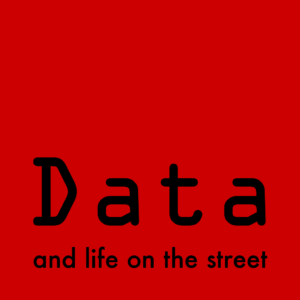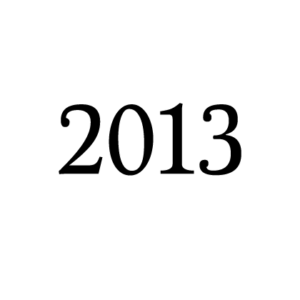Delighted to have a chapter published in Dawn Nafus’ new book, Quantified (MIT Press). (more…)
Category: Writing
Back to interaction (a reply to Barry)
I’m grateful to Barry Brown for his comments on my short Interactions piece, “After Interaction”.
Barry, as always, you’ve forced me to think more carefully about my meanderings. Indeed, my intention was to append a short reply to your comment, but your questions have demanded more and, predictably, words have got the better of me. This post, then, is my long-winded response. Thank you for giving me the chance to expand on my thoughts.
First, let me respond to your criticisms regarding the interminglings of humans and nonhumans. (more…)
“Earthwide projects” at Shifting Borderlands, Aarhus 2015
I was delighted to participate in last month’s “Shifting Borderlands” workshop at the decennial Aarhus Conference: Critical Alternatives . What an inspiring and memorable event! My sincerest thanks to the organisers, Silvia, Marisa, Lucian, Hrönn and Carl.
The position papers—from a wonderful mix of people—are all online here. My own text was a short but rambling piece on some still underdeveloped ideas. I’ve been trying to think a little more critically about my role as a academician and a Microsoft researcher. Predictably, in combination, the roles raise all sorts of questions and frictions for me. Increasingly, I’ve directed my efforts at thinking about the worlds I’ve helped to enact and asking whether they are kinds of worlds that I would want to live in.
It’s hard to put it better than Donna Haraway:
My piece, “Impact and Counting”, is available here.
Published “After Interaction”
Just had a short piece, After Interaction, published in Interactions magazine. (more…)
Presenting “Data in place”
We’re presenting a paper at CHI this year on Tenison Road.
Alex S. Taylor, Siân Lindley, Tim Regan, David Sweeney, Vasilis Vlachokyriakos, Lillie Grainger, Jessa Lingel (2015), Data-in-Place: Thinking through the Relations Between Data and Community, CHI 2015.
Here’s the abstract:
We present findings from a year-long engagement with a street and its community. The work explores how the production and use of data is bound up with place, both in terms of physical and social geography. We detail three strands of the project. First, we consider how residents have sought to curate existing data about the street in the form of an archive with physical and digital components. Second, we report endeavours to capture data about the street’s environment, especially of vehicle traffic. Third, we draw on the possibilities afforded by technologies for polling opinion. We reflect on how these engagements have: materialised distinctive relations between the community and their data; surfaced flows and contours of data, and spatial, temporal and social boundaries; and enacted a multiplicity of ‘small worlds’. We consider how such a conceptualisation of data-in-place is relevant to the design of technology.
Published Modelling Biology – working through (in-)stabilities and frictions
Just had our paper on Computational Biology published in the online journal Computational Culture.
Alex S. Taylor, Jasmin Fisher, Byron Cook, Samin Ishtiaq and Nir Piterman (2014) Modelling Biology – working through (in-)stabilities and frictions. Computational Culture, 1 (4).

Abstract: Computational biology is a nascent field reliant on software coding and modelling to produce insights into biological phenomena. Extreme claims cast it as a field set to replace conventional forms of experimental biology, seeing software modelling as a (more convenient) proxy for bench-work in the wet-lab. In this article, we deepen and complicate the relations between computation and scientific ways of knowing by discussing a computational biology tool, BMA, that models gene regulatory networks. We detail the instabilities and frictions that surface when computation is incorporated into scientific practice, framing the tensions as part of knowing-in-progress—the practical back and forth in working things out. The work exemplifies how software studies—and careful attention to the materialities of computation—can shed light on the emerging sciences that rely on coding and computation. Further, it puts to work a standpoint that sees computation as tightly entangled with forms of scientific knowing and doing, rather than a wholesale replacement of them.
Published Data and life on the street
We’ve published a short commentary on the Tenison Road project in the new Big Data & Society journal. Download it here (open access).

Taylor, A. S., Lindley, S., Regan, T., & Sweeney, D. (2014). Data and life on the street. Big Data & Society, 1(2).
Abstract: What does the abundance of data and proliferation of data-making methods mean for the ordinary person, the person on the street? And, what could they come to mean? In this paper, we present an overview of a year-long project to examine just such questions and complicate, in some ways, what it is to ask them. The project is a collective exercise in which we – a mixture of social scientists, designers and makers – and those living and working on one street in Cambridge (UK), Tenison Road, are working to think through how data might be materialised and come to matter. The project aims to better understand the specificities and contingencies that arise when data is produced and used in place. Mid-way through the project, we use this commentary to give some background to the work and detail one or two of the troubles we have encountered in putting locally relevant data to work. We also touch on a methodological standpoint we are working our way into and through, one that we hope complicates the separations between subject and object in data-making and opens up possibilities for a generative refiguring of the manifold relations.
Short note on Solove’s ‘Nothing to Hide’

Some early thoughts on data and privacy, thinking with Solove’s Nothing to Hide:
Early on in his 2011 book, Nothing to Hide, Daniel Solove makes a provocative claim. He writes:
“Legal and policy solutions focus too much on the problems under the Orwellian metaphor—those of surveillance—and aren’t adequately addressing the Kafkaesque problems—those of information processing” p.26
Solove’s point here is that much of the legal wranglings and policy making surrounding privacy are based on the premise that people have something to hide. Thus the aims have, by and large, been tied to securing protections against surveillance—operating within the rubric of an “Orwellian metaphor”.
The broader argument Solove makes is that this treatment of privacy is missing the proverbial trick. As a concept, privacy doesn’t simply entail people wanting to hide things. For starters, according to Solove, “[m]any people don’t care about concealing the hotels they stay at, the cars they own, or the kind of beverages they drink.” p.25 “[M]uch of the data gathered in computer databases isn’t particularly sensitive, such as one’s race, birth date, gender, address, or marital status.” P.25
It isn’t so much the gathering of information that matters, Solove contends. It’s what agencies like governments are doing with it—the “information processing”—that counts. The allusion is to a Kafkaesque world in which the relations between agencies and individuals are managed and controlled through the analysis of information or data. The power, so to speak, is held by those who can both access the data and subject it to sophisticated analysis. I take this use of information processing to be analogous to big data analytics and certainly most of the examples Solve refers to support this.
I don’t know what Solove’s sources are for suggesting “most people” don’t care about the content of the information being gathered about them (this recent Guardian article appears to confirm this). I do get his broader point though. Certainly, it’s limiting to see privacy as exclusively based on the premise that people have something to hide. Moreover, the possibilities big data analytics open up for discovering some pretty personal things about people do seem daunting, if perhaps over-hyped.
Yet, without wanting to discount Solove’s argument, I want to propose a different way of thinking about this issue of information processing. Seen from the ground up, we might also start to ask what people themselves want to say through their data and using analytics. When Solove writes about “most people” I think we need to begin thinking about what this actual means and if there are ways of making claims like this actionable. So, a counter to the “nothing to hide argument” could be that most people—given the knowledge and tools—have “something to say”. That is they may want to have some say over how their information is distributed, aggregated, analysed and interpreted and, ultimately, how it is productively put to work. This certainly won’t solve the multiple problems surrounding privacy, but it may at least redistribute the power and, in the process, give people some new ways of expressing themselves.
Oh, and as it happens, this question of how to enable people to have some sort of say and control over what gets done with their information is one of the motivations for the new project we’re ramping up in my group at Microsoft Research.
* A thank you to Jessa Lingel for pointing me to the first quote above from Solove.
2013 publications updated

Updated 2013 publications.